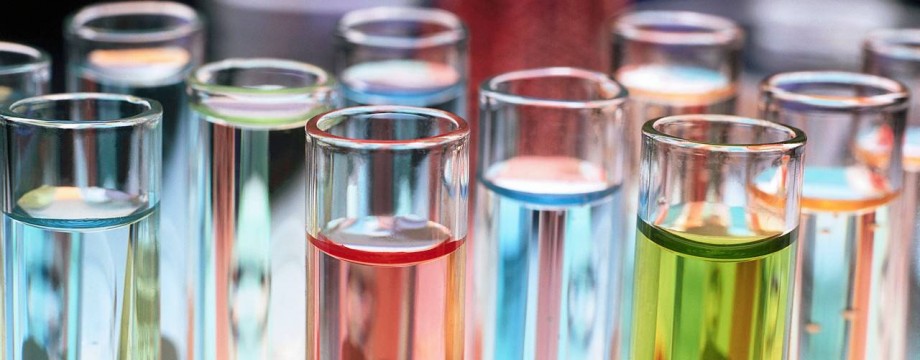Chapter 13: Chemical Equilibrium
- chemical equilibrium the state where the concentrations of all reactants and products remain constant with time.

- Equilibrium expression:

NOTE: For pressure equilibrium problems, () are use instead of [].
Reaction quotient (Q)
- Q is equal to K. System at equilibrium; no shift
- Q is greater that K. System shifts to the left; consumes products and forms reactants
- Q is less than K. System shifts to the right; producing products and consuming reactants
Le Chatelier’s Principle: If a change is imposed on a system at equilibrium, the position of the equilibrium will shift in the direction that tends to reduce that change. (The system will shift in the direction that relieves the stress)
Chapter 14: Acids and Bases
- Acids taste sour
- Bases (aka alkalis) taste bitter and feel slippery
- Arrhenius Concept- a concept postulating that acids produce hydrogen ions in aqueous solution, while bases produce hydroxide ions (** limited b/c it only applies to aqueous solutions and only allows for one kind of base, OH- **)
- Bronsted-Lowery Model- an acid is a proton (H+) donor, and a base is a proton acceptor (** Not limited to aqueous solutions, includes gas phase**)
Ex: HA (aq) + H2O(l)—> H3O+(aq) + A- (aq)
- conjugate base- everything that remains of the acid molecule after the proton is lost
- conjugate acid- formed when the proton is transferred to the base
- conjugate acid-base pair- consists of two substances related to each other by the donating and accepting of a single proton
- Ka= acid dissociation constant
- strong acid- equilibrium lies far to the right; yields a weak conjugate base; full dissociation
- weak acid- equilibrium lies far to the left; stong conjugate base; barely dissociates.
- common strong acids: sulfuric acid (H2SO4), hydrochloric acid (HCl), nitric acid (HNO3), and perchloric acid (HClO4)
- common weak acids: phosphoric acid (H3PO4), nitrous acid (HNO2), and hypochlorus acid (HOCl)
- Amphoteric- a substance that can behave either as an acid or as a base (EX: water)
Possible Situations:
- A neutral solution, where [H+]
- An acidic solution, where [H+] >[OH-]
- A basic solution, where [OH-]> [H+]
Kw= [H+][OH-]= 1.0*10^-14
pH
pH= -log [H+]
pOH= -log[OH-]
pK= -log K
Percent Dissociation= [amount dissociated (M)/ initial concentration (M)] *100
- polyprotic acids- acids that can hold more than one proton
Ka<Kb pH<7 (acidic)
Kb>Ka pH>7 (basic)
Ka= Kb pH= 7 (neutral)
| Model | Definition of Acid | Definition of Base |
| Arrhenius | H+ producer | OH- producer |
| Bronsted-Lowry | H+ donor | H+ acceptor |
| Lewis | electron-pair acceptor | electron- pair donor |
Chapter 15: Applications of Aqueous Equilibria
- common ion- what is produced by both substances
- common ion effect- the shift in equilibrium position that occurs because of the addition of an ion already involved in the equilibrium reaction
- buffered solution- resists a change in its pH
- Henderson- Hasselbalch equation:
- Buffering Capacity- the amount of protons or hydroxide ions the buffer can absorb without a significant change in pH.
- Equilvalence point (stoichiometic point)- the point in a tritration when enough titrant has been added to react exaactly with the substance in solution being titrated
pH CURVES:

- ion product (Q)- ininital concentrations are used
- selective precipitation- a method of separating metal ions from an aqueous mixture by using a reagent whose anions forms a precipitate with only one or fewer ions in the mixture
Chapter 16: Spontaneity, Entropy, and Free Energy
- first law of thermodynamics– Energy can neither be created nor destroyed
- spontaneous= occurs without outside intervention and can be fast or slow
- NOTE: Thermodynamics can tell us the direction in which a process will occur but can say nothing about the speed of the process
- entropy (S)- the driving force for a spontaneous process is an increase in the entropy of the universe
- Entropy can be viewed as a measure of molecular randomness or disorder
- describes the # of arrangments that are available top a system existing in a given state
- NOTE: The probability of occurrence of a particular arrangement (state) depends on the # of ways (microstates) in which that arrangement can be achieved
- Positional Probablitiy- depends on the # of configurations in space that yield a particular state
- second law of thermodynamics– In any spontaneous process there is always an increase in the entropy of the universe.
- NOTE: in an endothermic process, heat flows from the surroundings into the system. In an exothermic process, heat flow flows into the surroundings from the system
- Free energy (G):
G= H-TS
H= enthalpy T= temperature (K) S= entropy
- A reaction is spontaneous in the direction that the free energy decreases
- Thrid law of thermodynamics– the entropy of a perfect crystal at 0K is zero
- standard free energy change- the change in free energy that will occur if the reactants are in their standard state
- standard free energy of formation- the change in free energy that accompanies the formation of 1 mole of that substance from it constituent elements with all reactants and products in their standar states (25 C and 1 atm)
- The equilibrium position represents the lowest free energy value available to a particular reaction system
- equilibrium point- occurs at the lowest value of free energy available to a reaction system
- delta G = 0 ~~~~~> equilbirium
- delta G < 0 ~~~~~> delta G = negative
- delta G > 0 ~~~~~> delta G = positive
- reversible process- leaves the universe exactly the way it was before the process began
- irreversible process- leaves the universe different from where it started
